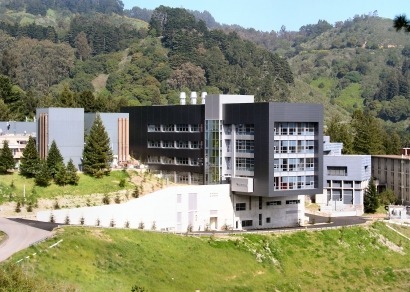
In research supported by the US Department of Energy Office of Science, scientists at the Lawrence Berkeley National Laboratory have developed the first fully integrated nanosystem for artificial photosynthesis, now being described as an “artificial forest”.
“Similar to the chloroplasts in green plants that carry out photosynthesis, our artificial photosynthetic system is composed of two semiconductor light absorbers, an interfacial layer for charge transport, and spatially separated co-catalysts” said Peidong Yang, a chemist with Berkeley Laboratory’s Materials Sciences Division, and leader of the research team. “To facilitate solar water- splitting in our system, we synthesized tree-like nanowire heterostructures, consisting of silicon trunks and titanium oxide branches. Visually, arrays of these nanostructures very much resemble an artificial forest.”
Mr Yang is the corresponding author of a paper published in the journal NANO Letters which describes his work. He also holds research appointments at the University of California Berkeley’s Chemistry Department and the Department of Materials Science and Engineering. The paper’s full title is “A Fully Integrated Nanosystem of Semiconductor Nanowires for Direct Solar Water Splitting” and his co-authors are Chong Liu, Jinyao Tang, Hao Ming Chen and Bin Liu.
Artificial photosynthesis is currently regarded as one of the most promising solar technologies although it faces a severe challenge in successfully producing hydrogen cheaply enough to compete with fossil fuels. In order to do this it will have to involve an integrated system that can efficiently absorb sunlight and produce charge-carriers in order to drive the separate water reduction and oxidation half-reactions.
“In natural photosynthesis the energy of absorbed sunlight produces energized charge-carriers that execute chemical reactions in separate regions of the chloroplast” Yang continues. “We’ve integrated our nanowire nanoscale heterostructure into a functional system that mimics the integration in chloroplasts and provides a conceptual blueprint for better solar-to-fuel conversion efficiencies in the future.”
Mr Yang and his team use a ‘Z-scheme’, an electron transport chain so called because it resembles the letter Z on its side. Unlike the Z-schemes found in chloroplasts in natural plants, Yang’s Z-scheme uses two abundant and stable semiconductors – silicon and titanium oxide – loaded with co-catalysts and with an ohmic contact inserted between them. Like trees in a forest, the dense arrays of artificial nanowire trees suppress sunlight reflection and provide more surface area for energy-generating reactions.
Under simulated sunlight, the artificial photosynthesis system achieved a 0.12 percent solar-to-fuel conversion efficiency. This rate will have to be improved substantially in order to be commercially viable but the modular design of the system will enable newly discovered components to be incorporated in order to improve performance.
Further information:

